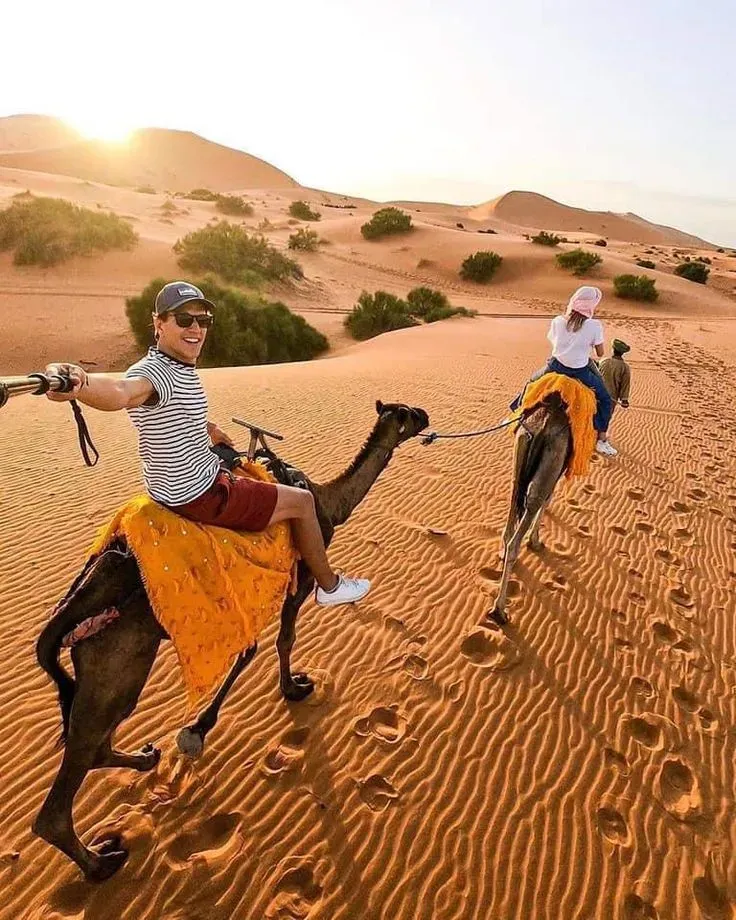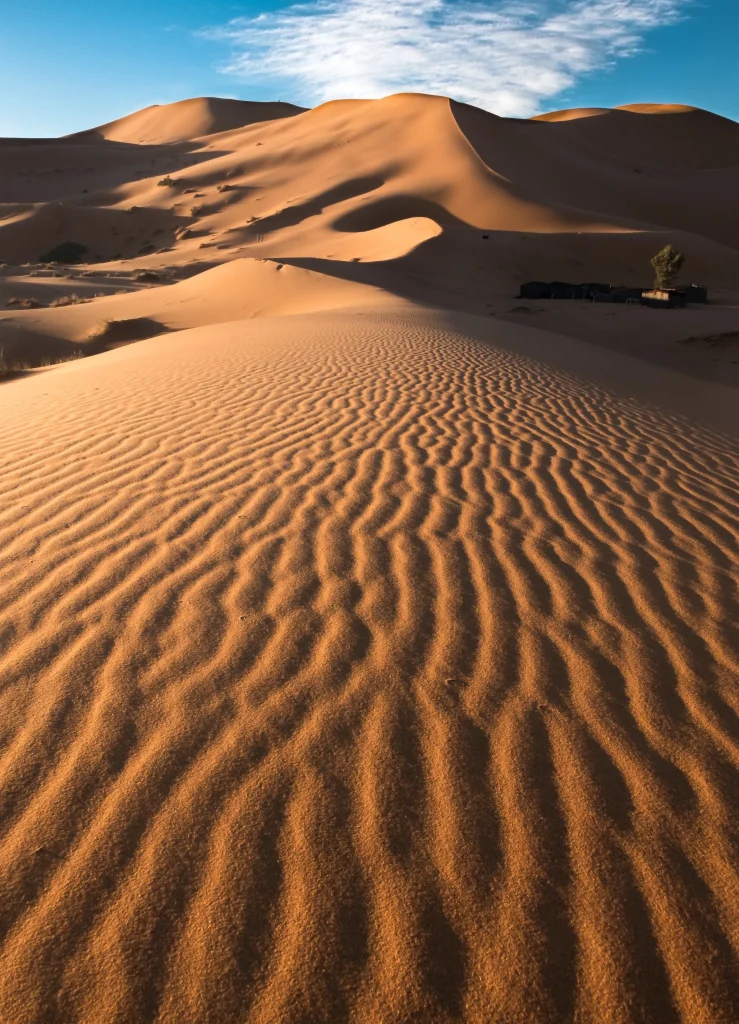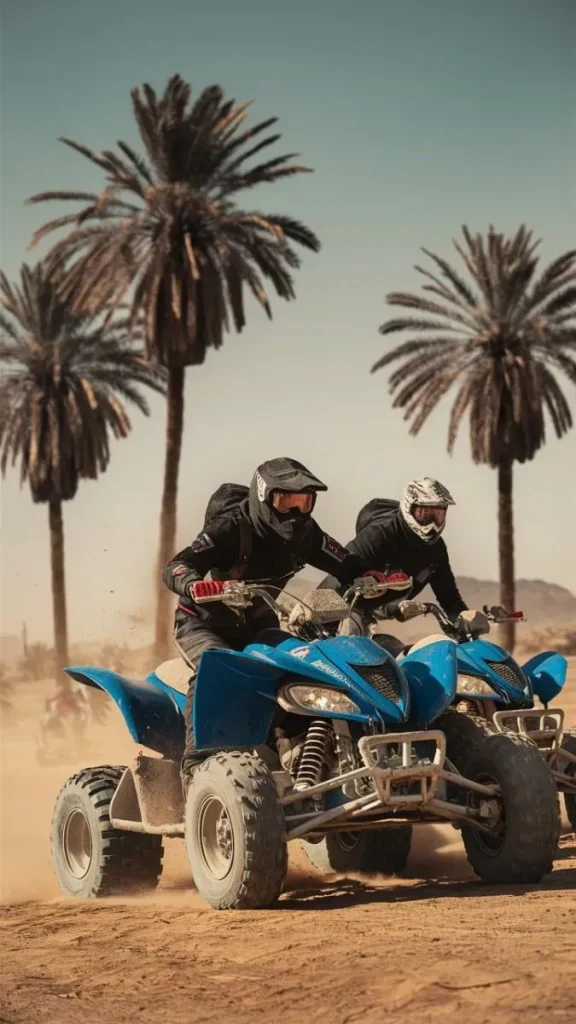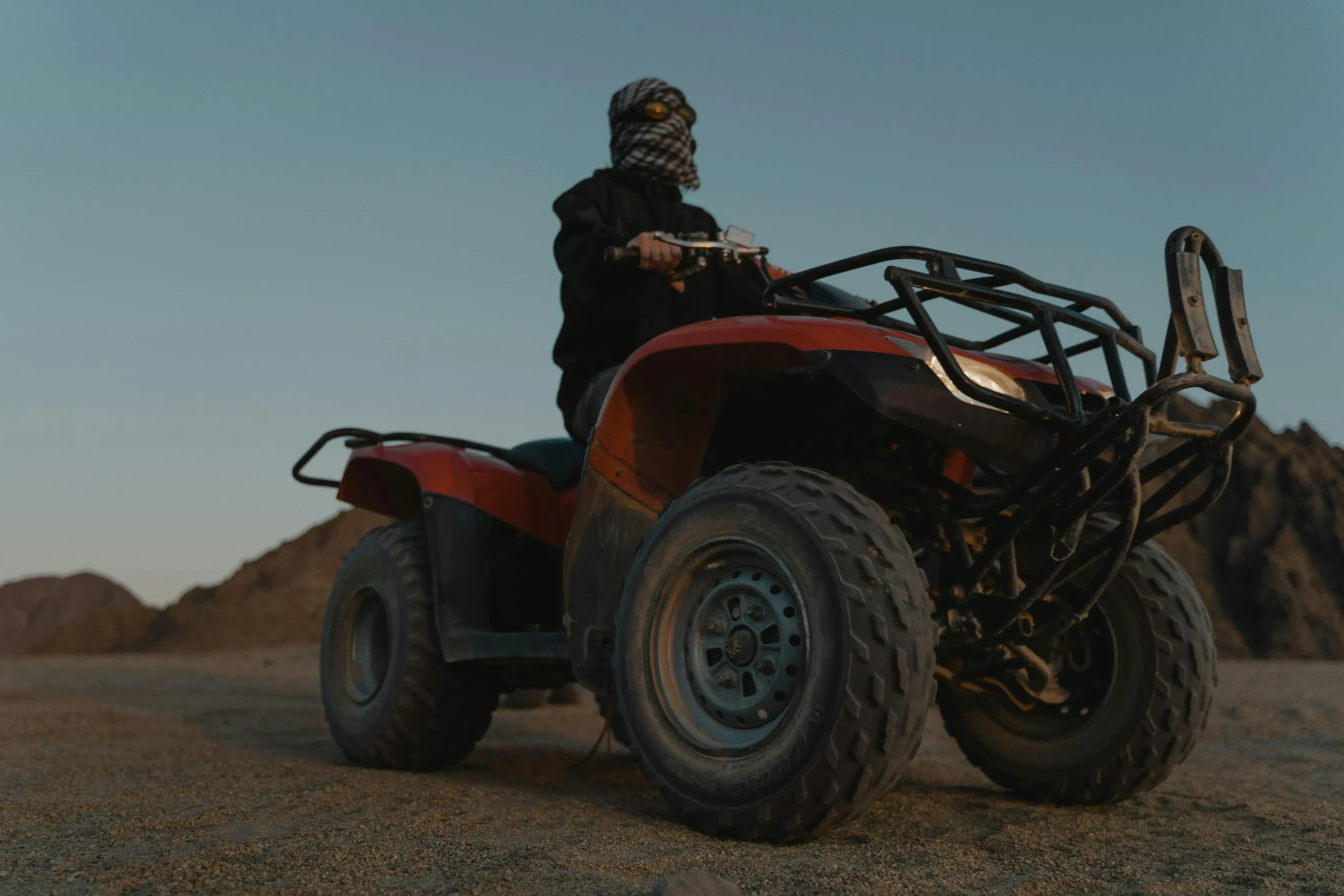Discover The Best Sahara Desert Tours in 3 days
Did you know that the Sahara Desert covers over 3.6 million square miles, making it nearly the size of the United States? This vast ocean of sand offers some of the most breathtaking landscapes on Earth and unforgettable experiences for adventure seekers. The best Sahara Desert tours combine cultural immersion, spectacular natural wonders, and authentic Berber hospitality in a compact yet comprehensive journey. Whether you’re dreaming of riding camels across golden dunes, sleeping under star-filled skies, or exploring ancient desert villages, a well-planned 3-day tour can deliver all these experiences and more. Let’s explore how to make the most of your Sahara adventure!
Table of Contents



Why Visit the Sahara Desert?
The Sahara isn’t just any desert—it’s the world’s largest hot desert and a place of extraordinary beauty and cultural significance. The rolling sand dunes can reach heights of over 500 feet, creating an otherworldly landscape that shifts and changes with the wind. Beyond its natural splendor, the Sahara has been home to nomadic tribes for thousands of years and served as a crucial trade route connecting sub-Saharan Africa with the Mediterranean world.
What makes the best Sahara Desert tours truly special is the combination of natural wonders and human history. From the nomadic Berber culture to ancient rock art dating back 12,000 years, the desert tells fascinating stories of human adaptation and resilience in one of Earth’s most extreme environments.
If you’re considering a desert adventure, you might also want to check out our guide on Best Desert Camping Experiences in Morocco for more inspiration on extending your stay.
Best Time to Visit the Sahara Desert
Timing your visit is crucial for enjoying the best Sahara Desert tours without suffering from extreme temperatures or weather conditions.
Fall (September-November)
RECOMMENDATION: ⭐⭐⭐⭐⭐
Fall offers ideal desert conditions with warm days (70-85°F/21-29°C) and cool nights (50-60°F/10-15°C). The tourist crowds are moderate, and the weather is perfect for camel trekking and camping. September can still be quite hot, but October and November offer perfect desert weather.
Spring (March-May)
RECOMMENDATION: ⭐⭐⭐⭐
Spring brings similar comfortable temperatures to fall, with blooming desert plants adding splashes of color to the landscape. However, be aware that spring can bring occasional sandstorms, particularly in March and April. May starts to get warmer as summer approaches.
Winter (December-February)
RECOMMENDATION: ⭐⭐⭐
Winter days are pleasantly warm (65-75°F/18-24°C), but nights can get very cold, dropping to around 40°F/5°C or lower. Pack warm layers for nighttime, especially if camping. The upside is fewer tourists and crystal-clear skies for stargazing.
Summer (June-August)
RECOMMENDATION: ⭐
Summer temperatures regularly exceed 100°F/38°C, making many desert activities uncomfortable or even dangerous. Most quality tour operators reduce or suspend their tours during this period. If you must visit in summer, consider shorter excursions and prioritize early morning or evening activities.
Top Things to Do in the Sahara Desert
Camel Trekking Across the Dunes
No Sahara Desert tour is complete without experiencing the traditional mode of desert transportation. Camel treks typically last 1-2 hours each way when traveling to desert camps, allowing you to experience the dunes at a leisurely pace. The best treks occur during sunrise or sunset when the changing light paints the sand in stunning gold, amber, and rose hues.
Pro tip: While romantic, camel riding can be uncomfortable for first-timers. Bring a scarf to protect against sand and sun, and don’t be shy about asking your guide to stop for photo opportunities.
Overnight Camping in Traditional Berber Tents
Spending a night in the desert is the highlight of the best Sahara Desert tours. Most camps offer traditional wool tents arranged around a central area where you’ll enjoy dinner and evening entertainment. Luxury camps feature comfortable beds with proper linens, en-suite bathrooms, and gourmet meals, while standard camps provide mattresses with clean bedding and shared facilities.
The real magic happens after dinner when you can lie back on carpets spread across the sand and gaze up at one of the clearest night skies you’ll ever see. The Sahara’s lack of light pollution makes it one of the world’s premier stargazing destinations, according to the International Dark-Sky Association.
Sandboarding Down Massive Dunes
For adventure enthusiasts, sandboarding offers an exhilarating way to experience the desert’s giant dunes. Similar to snowboarding but on sand, this activity lets you slide down dunes at thrilling speeds. Most Sahara Desert tours can arrange sandboarding equipment, though it’s worth confirming this in advance if it’s a priority.
Visit Desert Villages and Oases
The Sahara isn’t just endless sand—it’s dotted with oases and villages where people have adapted to desert life for centuries. Many tours include visits to places like:
- Khamlia: Famous for Gnawa music performances
- Merzouga: The gateway town to the Erg Chebbi dunes
- Hassilabied: A traditional desert village with adobe architecture
These visits provide cultural context and a glimpse into the remarkable ways humans have thrived in this harsh environment.
Where to Stay in the Sahara Desert
Luxury Desert Camps
For travelers seeking comfort amidst the dunes, luxury camps like Sahara Stars Camp and Desert Luxury Camp offer private tents with proper beds, en-suite bathrooms with hot showers, gourmet dining experiences, and even air conditioning in some cases. Expect to pay $150-300 per person per night, including transportation, meals, and activities.
Guest review: “Falling asleep to absolute silence under millions of stars, then waking to a magnificent sunrise over the dunes—all while enjoying excellent service and surprising comforts—was worth every penny.” — Sarah T., TripAdvisor
Mid-Range Desert Camps
Camps like Sahara Desert Dreams and Camel Trekking Camp offer comfortable tents with proper beds and linens, shared bathroom facilities with running water, good quality meals, and cultural entertainment. Prices range from $80-150 per person per night, including transportation and activities.
Budget Desert Experiences
For budget travelers, basic camps provide simple mattresses in shared tents, basic toilet facilities, and simple but filling meals. These experiences focus on authenticity rather than comfort but still deliver the essential Sahara experience for $40-80 per person.
For more detailed accommodation options, check out our Complete Guide to Sahara Desert Accommodations.
How to Get There
From Marrakech
Most Sahara Desert tours depart from Marrakech, requiring a 7-9 hour drive to reach the desert. The journey crosses the spectacular High Atlas Mountains via the Tizi n’Tichka pass (7,415 feet elevation) and includes stops at attractions like Ait Ben Haddou Kasbah and Ouarzazate.
Royal Air Maroc offers flights from major European cities to Marrakech, with connections available from North America.
From Fes
Tours from Fes offer a shorter 7-hour drive to the desert and follow a different route through the Middle Atlas Mountains and the Ziz Valley. This route passes through cedar forests and offers opportunities to see Barbary macaques in their natural habitat.
Private Transportation
For independent travelers, car rentals are available from companies like Hertz Morocco, but navigating desert roads can be challenging. Private drivers can be arranged for approximately $150-200 per day.
Travel Costs & Budgeting Tips
3-Day Tour Costs
- Budget tours: $130-180 per person (basic accommodations, group transportation)
- Mid-range tours: $200-350 per person (comfortable accommodations, smaller groups)
- Luxury tours: $400-800+ per person (premium accommodations, private transportation)
Money-Saving Tips
- Travel in shoulder seasons (October-November or March-April) for better deals
- Book directly with local operators rather than through international agencies
- Join group tours instead of private experiences
- Negotiate prices when booking in person (less effective online)
- Bring your own snacks and water for the journey
What’s Typically Included
Most Sahara Desert tours include transportation, accommodations, camel trekking, and some meals. Always confirm what’s included before booking, particularly regarding:
- Entrance fees to attractions
- All meals or just breakfast/dinner
- Water and other drinks
- Additional activities like sandboarding
Local Culture & Etiquette
The Sahara region is predominantly Muslim and more conservative than Morocco’s major cities. Respecting local customs will enrich your experience:
- Dress modestly, covering shoulders and knees, especially when visiting villages
- Ask permission before photographing local people
- Remove shoes when entering homes or carpeted areas in camps
- Use your right hand for eating from communal dishes
- Learn a few Arabic or Berber phrases (shukran/thank you, la shukran/no thank you)
Many desert guides are Berber people with deep connections to the region. Showing interest in their culture and traditions is always appreciated and often leads to more authentic interactions.
Common Mistakes to Avoid
- Booking the cheapest tour possible – Budget tours often take shortcuts on quality, safety, and ethical treatment of staff and animals
- Underestimating the desert climate – Failing to pack both sun protection and warm clothes for night
- Not bringing cash – ATMs don’t exist in the desert
- Overpacking – You’ll need to carry your bag on a camel
- Tight scheduling – The long journey requires buffer time; avoid booking flights the same day your tour returns
One traveler shared: “I booked the absolute cheapest tour I could find online. Our ‘luxury camp’ turned out to be overcrowded with poor facilities, and our camels seemed underfed and overworked. I wish I’d spent just $50 more for a reputable operator.”
Safety Tips & Travel Essentials
Essential Packing List
- Clothing: Lightweight, breathable clothes for day; warm layers for night
- Footwear: Closed shoes for camel riding; flip-flops for camp
- Protection: High-SPF sunscreen, sunglasses, wide-brimmed hat, scarf/shemagh
- Hygiene: Wet wipes, hand sanitizer, toilet paper
- Health: Personal medications, basic first aid, electrolyte packets
- Electronics: Power bank, camera (with dust protection)
Health & Safety
- Stay hydrated – Drink more water than you think you need
- Protect against the sun – Desert sun is intense even in winter
- Follow guide instructions – They understand desert safety
- Purchase travel insurance that covers emergency evacuation
We recommend World Nomads for comprehensive travel insurance that includes adventure activities.
Conclusion
The best Sahara Desert tours offer a perfect balance of adventure, cultural immersion, and natural wonder. Despite the long journey to reach this remote landscape, the experience of watching the sun set behind endless dunes, sleeping under brilliant stars, and connecting with the ancient desert culture makes it one of North Africa’s most rewarding travel experiences. With proper preparation and respect for both the environment and local traditions, your 3-day Sahara adventure will likely become one of your most treasured travel memories.
Have you experienced the magic of the Sahara? Share your desert stories in the comments below or check out our guides to other Moroccan adventures!
FAQs About Best Sahara Desert tours
Is a 3-day tour enough time to experience the Sahara?
Yes, a 3-day tour is the minimum recommended time. It typically includes one full day and two partial days of travel, with one night in the desert. While longer tours allow more desert time, a well-organized 3-day tour captures the essential Sahara experience.
How physically demanding are Sahara Desert tours?
Most tours are suitable for average fitness levels. The main physical activities include 1-2 hour camel rides and optional dune climbing. Inform your tour operator of any health concerns in advance.
Can I visit the Sahara Desert independently without a tour?
While technically possible, it’s not recommended. The desert requires navigational expertise, appropriate vehicles, and knowledge of safety protocols. Organized tours also provide cultural context and handle logistics in remote areas.
What type of bathroom facilities can I expect in desert camps?
Facilities vary dramatically by camp category. Luxury camps offer en-suite bathrooms with flushing toilets and hot showers. Mid-range camps typically have shared facilities with running water. Budget camps usually provide basic toilet tents with no running water.
Are Sahara Desert tours suitable for children?
Many tours accommodate families, but it’s best for children to be at least 6-7 years old to enjoy the experience safely. Verify with your tour operator about age-appropriate activities and accommodations.

